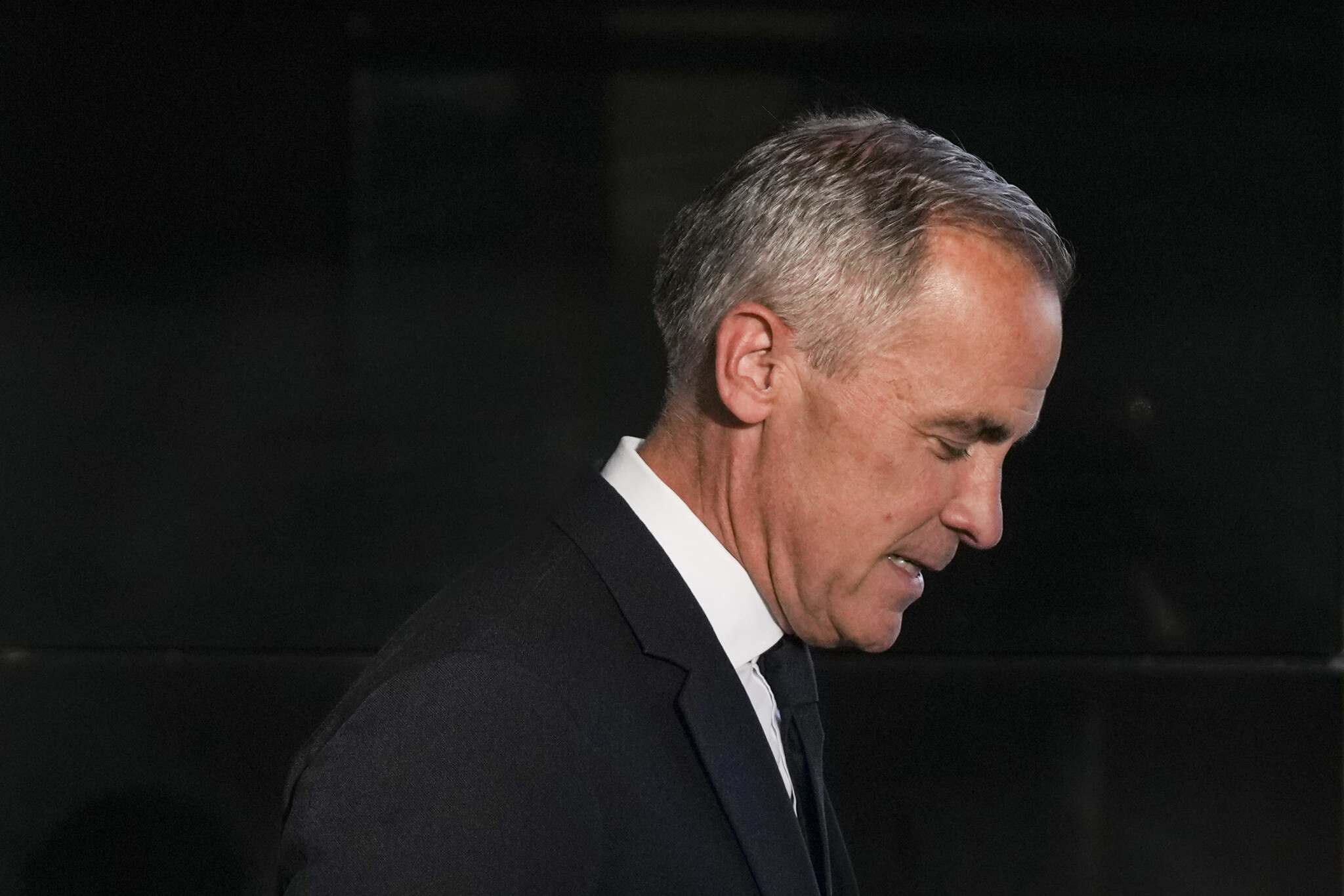Last weekend, Prime Minister Mark Carney prepositioned that federal revenues have fallen since last year’s economic and fiscal update, and the annual deficit will be bigger when his government tables its own budget next month.
It prompts the question: What’s a good rule-of-thumb for revenues considering Canada’s deteriorating economy? Different methods will, of course, produce different results, but one common approach suggests that revenues could fall as much as $12.4 billion this year alone.
The most recent Department of Finance Fiscal Monitor with yet-to-be-finalized budget figures for 2024-25 shows total revenues of $494.8 billion, with program expenses of $480.3 billion and public debt charges of $53.7 billion for a total deficit (once actuarial losses are factored in) of $43.2 billion. Compared to 2023-24, the deficit in 2024-25 shrank from $50.9 billion. This is because even though total expenses were up $45.812 billion, total revenues increased year-over-year by $50.05 billion—a 11.3 percent increase.
As for 2025-26, the 2024 Fall Economic Statement (FES) projected total revenues of $516.2 billion (a 4.3 percent increase), program expenditures of $500.3 billion (a 4.2 percent increase), and public debt charges of $54.2 billion for a total deficit (again including actuarial losses) of $42.1 billion.
Yet as the prime minister said, a lot has changed since December 2024, and revenue projections are likely to be lower for 2025-26 in the forthcoming budget. This means that even before the government reduces a dollar or adds in spending, the starting deficit will likely be larger than the one projected in last year’s economic and fiscal update.
Short-term variation aside, based on data from Finances of the Nation, since 1990, the average annual growth rate of total federal revenues has been 4.3 percent, with personal income tax (PIT) revenues growing at 4.6 percent and corporate income taxes (CIT) growing at 6.9 percent.
Recent revenue performance has been more robust than usual, with total revenue over the 2019 to 2024 period growing at an average annual rate of 7.0 percent, including PIT revenues at 6.5 percent and CIT revenues at an astounding 10.1 percent. Even the federal GST has seen average annual growth since 2019 of 6.5 percent. It turns out that the inflation of the last few years has helped bump up tax revenues.
Combine that with all the stimulus of pent-up demand and post-pandemic spending, the result has been a recent economy that, notwithstanding all the doom and gloom, has afforded the federal government considerably higher revenues.
Crucial to any budget projection going forward is the growth rate of federal revenues, given their sensitivity to economic growth itself. For the 1990 to 2024 period, the average annual revenue growth rate of 4.3 percent was accompanied by an annual average real GDP growth rate of 2.2 percent.
These numbers, at best, provide only a crude approach to the sensitivity of government revenues to GDP performance or what can be termed the income elasticity of revenues. A somewhat better approach to this relationship is estimating the income elasticity of federal government revenues via a simple linear regression of tax revenue on real GDP using a log-log model and annual data from 1990 to 2024.
The resulting regression yields an estimate of 1.57—in other words, a one percent increase in real GDP translates into a 1.57 percent increase in federal revenues. These sensitivities vary across the different taxes the federal government levies. For example, over the 1990 to 2024 period, the above methodology yields an income elasticity of 1.66 for the PIT, 2.62 for the CIT, and 1.44 for the federal GST.
Going forward, the issue is that these elasticities work the same way in reverse. For example, a 1 percent decline in real GDP growth would be associated with a 1.57 percent decline in total federal revenues.
Take the most recent GDP growth numbers from Statistics Canada, which showed the annualized growth rate of real GDP in the second quarter of -1.6 percent as a result of the sharp drop-off in exports and capital investment. If one goes back to the 2024-25 numbers and applies this elasticity to revenues of $494.8 billion, for 2025-26, rather than the 4.3 percent increase projected in the Fall 2024 FES there would have been a 2.5 percent drop in total revenues—a drop of $12.4 billion to $482.4 billion—and ultimately $33.8 billion less revenue than the $516.2 billion projected. Given the same level of expenditures, the 2025-26 deficit projected in the 2024 Fall FES would rise to $75.9 billion.
Now, one might argue that one could also factor in at least the first year of the government’s proposed austerity measures. As the prime minister has said, there won’t be cuts to transfers for the provinces or individual benefits, or, one might add, items like defence spending. This removes nearly two-thirds of program expenditures from any reductions, which, if one then applies a 7.5 percent target for spending reductions to the remainder, saves the government $13.8 billion, bringing the 2025-26 deficit down to only about $63.5 billion. If one applies the full 15 percent target to this calculation, the deficit then drops down to about $51.1 billion.
Again, given the announcements of spending increases, proposed austerity measures, and uncertain economic growth in the last two quarters of 2025, these are all at best educated guesses. The only certainty is that the deficit will be bigger than was anticipated only a few short months ago.
The main point is what happens to federal revenues as the economy evolves in the face of the trade war and potential recession is important. A close watch needs to be kept on the budget’s revenue projections in terms of their degree of optimism. The impact of the trade war and U.S. tariffs on Canada’s economy is still a work in progress, and much depends on whether the tariffs are temporary or permanent and what happens with the renegotiation of CUSMA.
Forecasts that assume the tariffs are temporary generate significantly less damage to Canada’s economic growth rate and, by extension, government revenues. On the other hand, if the second quarter of 2025 GDP growth rates are a harbinger of what is coming down the pipeline, then this fall’s budget needs to build these more adverse scenarios into the projections.
The net effect is that the government’s efforts to lower the deficit and balance the budget may be outside of its control. Watch the budget’s revenue line. It may prove to be even more important than what happens with spending.











